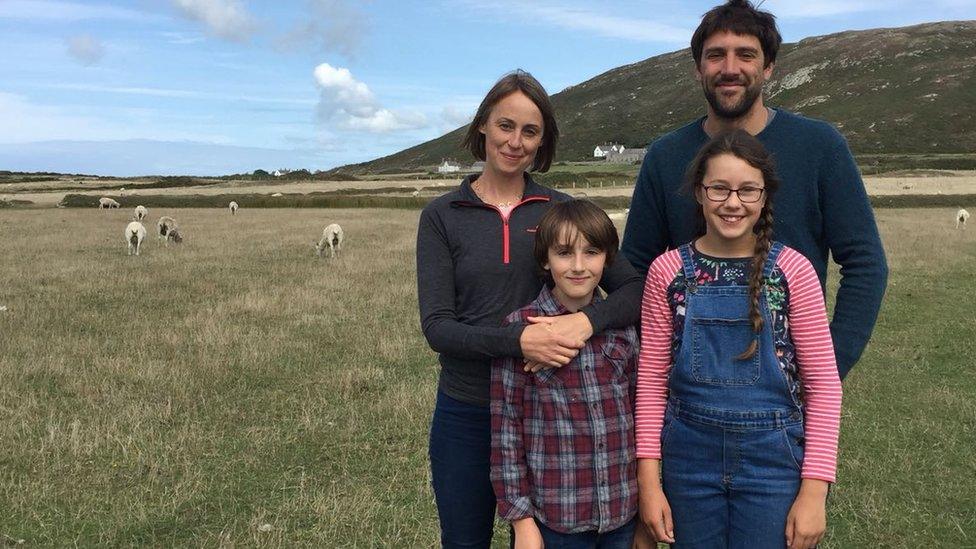A photographer's secrets to capturing wildlife on Bardsey Island
- Published
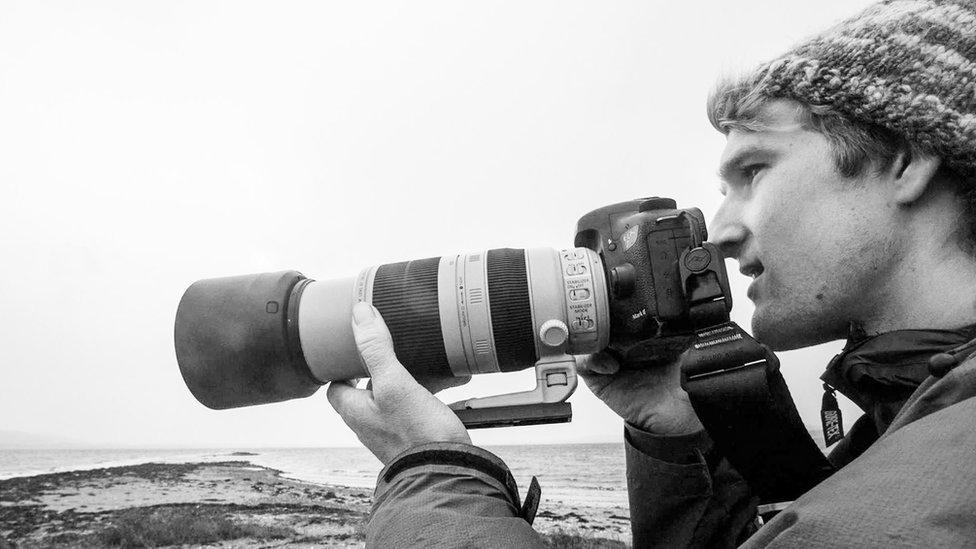
Ben Porter, 24, is currently working on photo editing for The Birds of Wales book, which will be published in the new year
Imagining the right picture, knowledge of the natural world, luck and a lot of patience - that's how Ben Porter says he captures his stunning photographs.
His family moved to Bardsey Island when he was 11 and his in depth knowledge of nature has helped him to capture the best of the island.
He now lives on the mainland near Mynydd Rhiw and works in conservation and photography.
So what are his secrets to capturing island nature at its best?
Ben's advice is to get to know "whatever is on your doorstep in an intimate way" so you can get to know wildlife and gauge the best times for light.
Swimming in green light
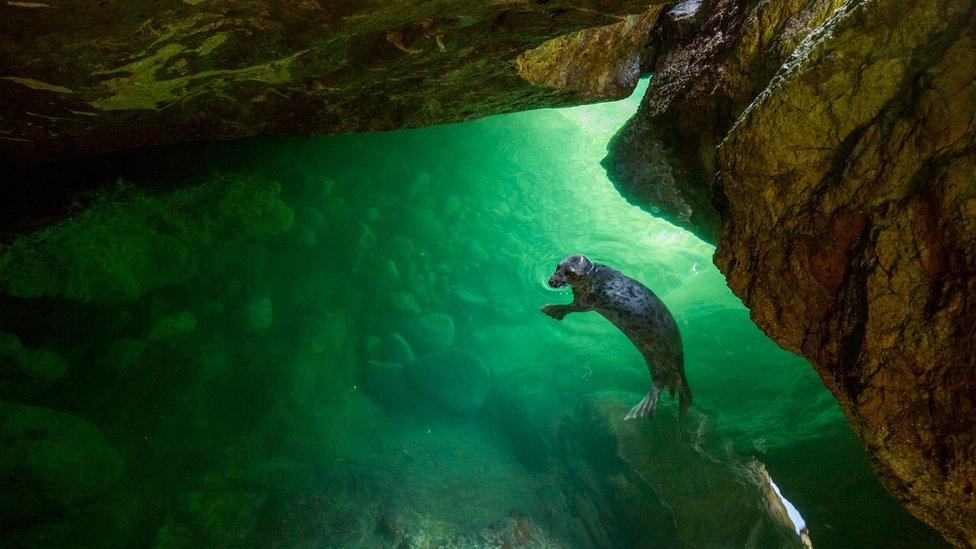
The light on the water in this coastal cave changes every time I go inside. It is my favourite picture taken on the island.
The colour depends on the sunlight coming through and the height and clarity of the water within the cave.
Sometimes it is murky and takes on a turquoise colour, but this time it appeared green and the light through the entrance illuminates it in an amazing way.
I snuck in and sat quietly on a ledge overlooking the lagoon waiting for seals which haul out during low tides.
You never know when the seals will appear so it took a while to capture this young one.
Manx shearwater
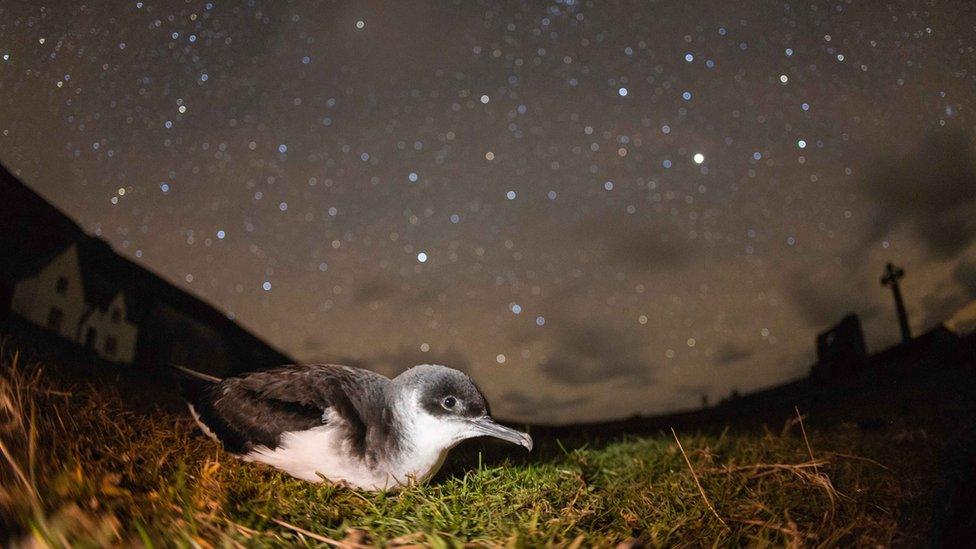
This one took me a year or two. Often I plan images and have the idea for a long time before.
It was about getting a lot of elements to come together: the right time of year, a Manx Shearwater not too timid to my presence, the right season when the birds come ashore and a clear sky.
Bardsey Island has some amazing dark skies, you can see the stars really clearly particularly in winter and spring.
Manx Shearwaters are a very unique sea bird species that only come to their colony at night.
I think they're kind of clumsy because they wander around a bit until they find their burrow, and they're not scared of your presence.
You can walk up to them carefully and take pictures like this - they're not too fussed.
Snoozing in sea foam
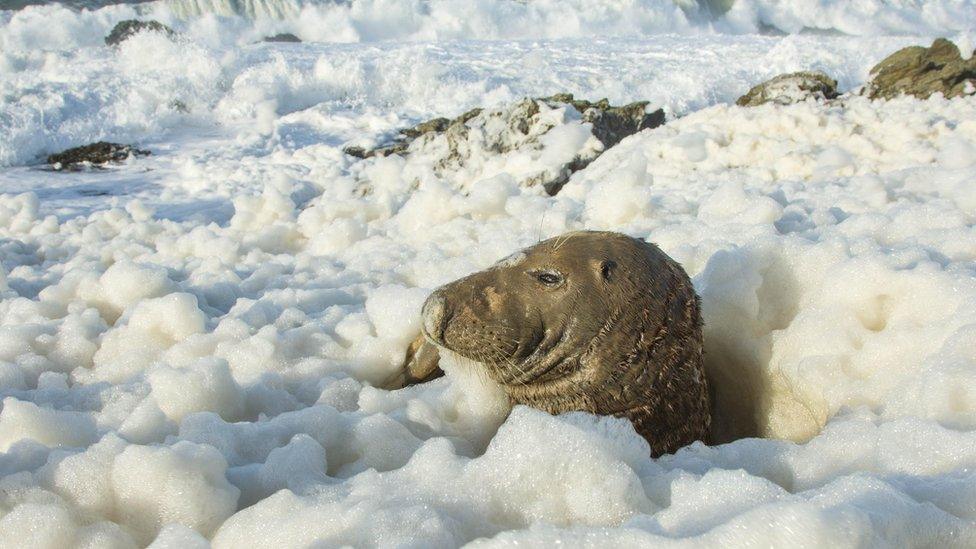
On really stormy winter days like this on the island, sea foam gets whipped up into huge mounds piled up.
You couldn't plan a photo like this.
I was walking along the coast and spotted a seal on the beach, which had been enveloped by the sea foam overnight.
Every so often it would poke its head up and have a look around.
I snuck up to it where I was down wind so my scent wasn't carried to it - I was very quiet - so got quite close and waited for it to raise it's head.
It was quite amusing; a seal having a snooze in the foam with a massive storm raging on in the background.
Sneaking up on an Oystercatcher
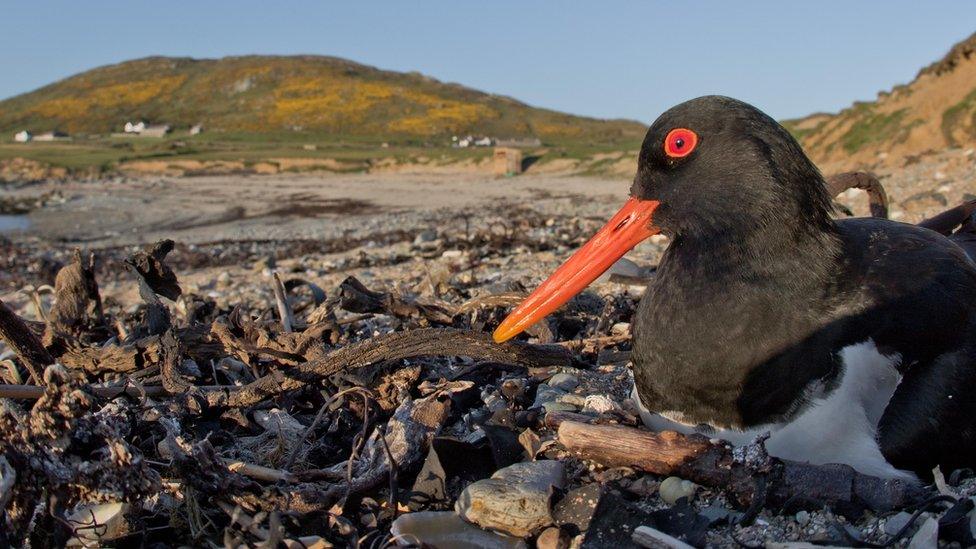
Oystercatchers don't let you get as close as this photo shows.
There are about 120 pairs on Bardsey, so quite a common breeding bird around the coast of the island.
But they can be fierce and protective of their territory. If you try to get near their nest during the breeding season, they make a huge racket and can attack by flying at you and swerving off.
So I positioned a remote shutter release with the camera on the beach for this, whilst I was hidden 15 metres away.
You can tell the age of these bird by their eye colour - their eyes become more red as they get older.
Gliding above stormy swells
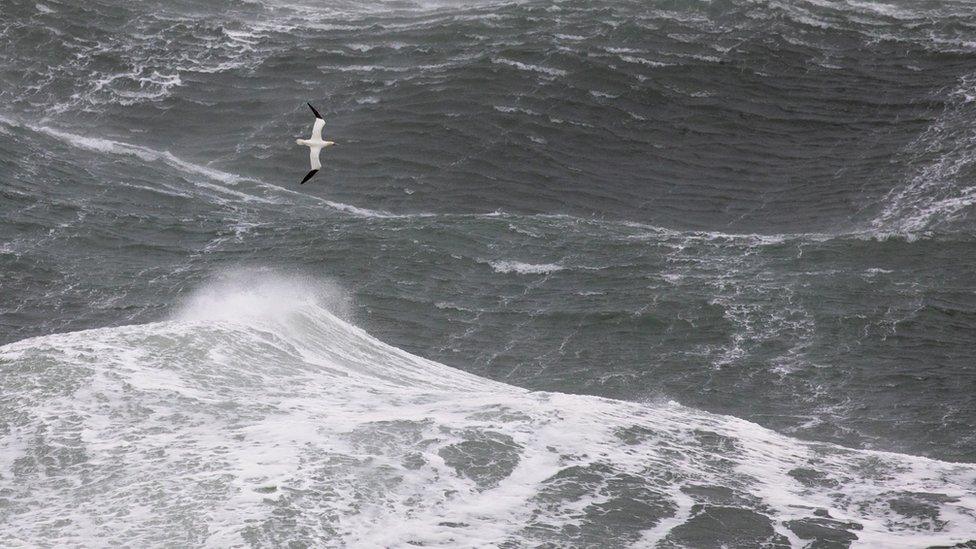
I love photographing bird life when storms hit the island.
This was taken in late August last year when Storm Francis hit, and I was right on the tip of the southern island.
It was epic - I managed to shelter behind a little hide just out of reach from the sea spray that was crashing onto the cliffs.
Lots of sea birds pass by at this time of year, leaving their breeding grounds and passing by here out into the Atlantic.
I shot a few gannets gliding by. When it is so windy they are able to keep their wings straight and use the wind off the waves to propel themselves forward.
Flying in this weather for them is to use the wind almost like sailing a boat.
Puffins crash landing
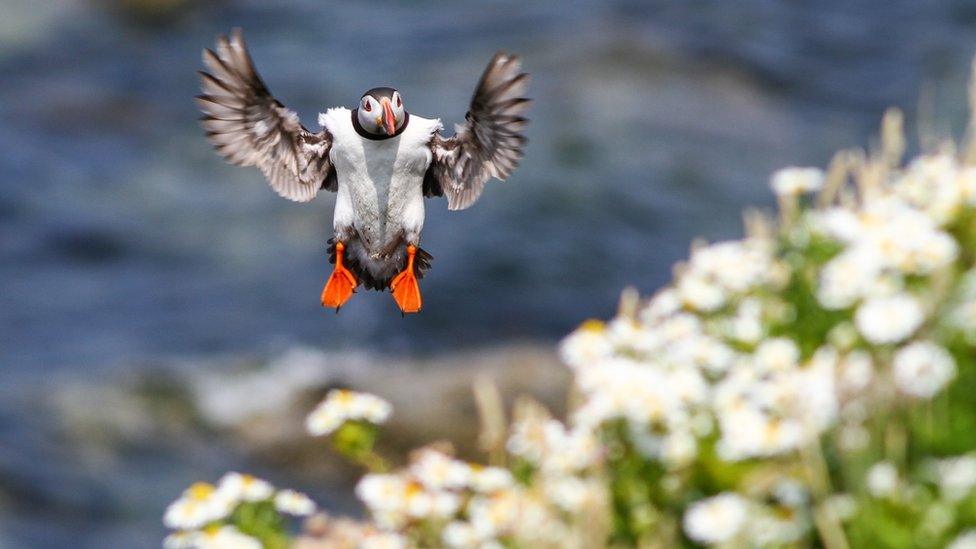
Puffins are so small and fast, it is almost impossible to lock onto them with a long camera lens. So this was tricky!
It took hours to get the right shutter speed to freeze them sharp enough but also get some movement of the wings.
But it was worth it to capture how they crash land into their burrows to feed their chicks.
We were on the Gulls Islands near Aberdaron doing an annual survey when we came across the colony of about 600 pairs of puffins.
As long as I stayed clear of burrows, they weren't bothered by my presence in the middle of the colony.
Finding life's last moments
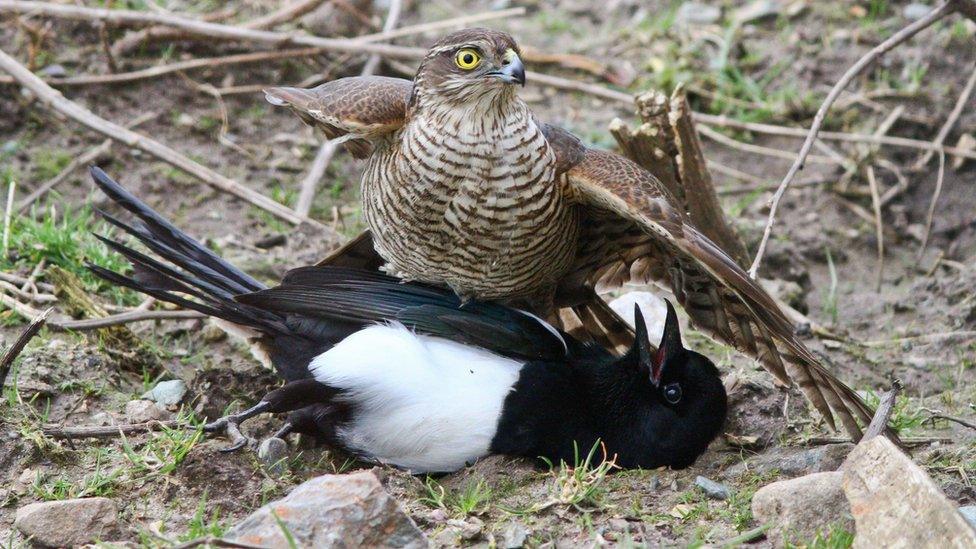
Watching this one really was gruesome - it took 40 minutes for the sparrowhawk to kill the magpie.
It was a bit of a battle between the two. The magpie put up quite a fight and at this point it is still clinging to life.
The sparrowhawk was so intent on having it's prey that it paid no attention to me standing about 5 metres away.
These birds do have quite large prey, but it is unusual to see something like a magpie.
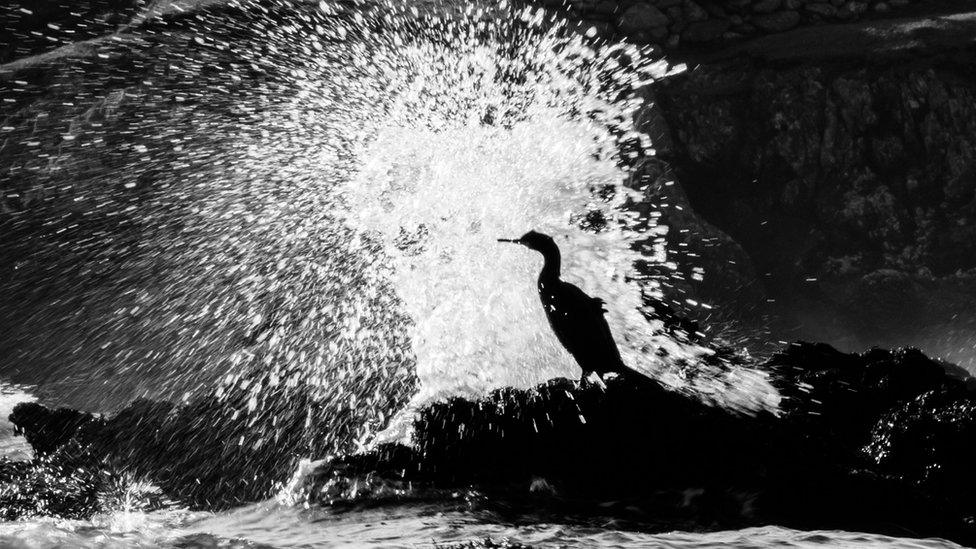
Winter on the island is great for scenes like this because there is such dramatic movement in the water.
I used slow exposure to capture the spray of the water over the rocks and the light behind the bird.
The bird here is a shag, which was a metallic green colour, but the backlit scene worked better in black and white.
In winter you often find them by the water's edge - ready to dive underwater for fish.
Black-beaked gull

Kittiwakes have a really distinctive call. The adult didn't care that I was there - he was calling either because another bird was coming near the nest or calling his mate who was bringing food to the chick.
The adults have a bright red gait and the younger ones a black beak.
We tend to count kittiwakes - a type of gull - several times during the breeding season and usually find them in colonies in mud and straw nests on cliffs.
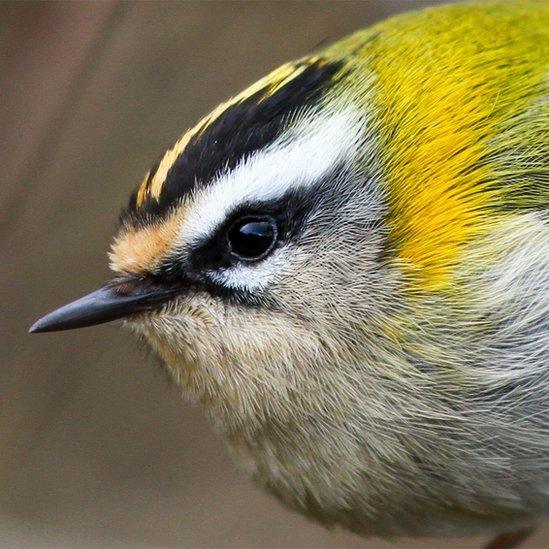
This is a firecrest wren. During the winter sometimes you get small warblers staying on the island instead of migrating south.
In 2014, this one in particular wintered on the island and gradually I go to know its movements and when to photograph it.
I was home schooled on the island through my GCSEs and A levels, and on breaks I'd go out and see what wildlife, like this one, was about.
Usually they stay hidden in depths of vegetation but eventually I was able to get near it.
The vivid moth in decline
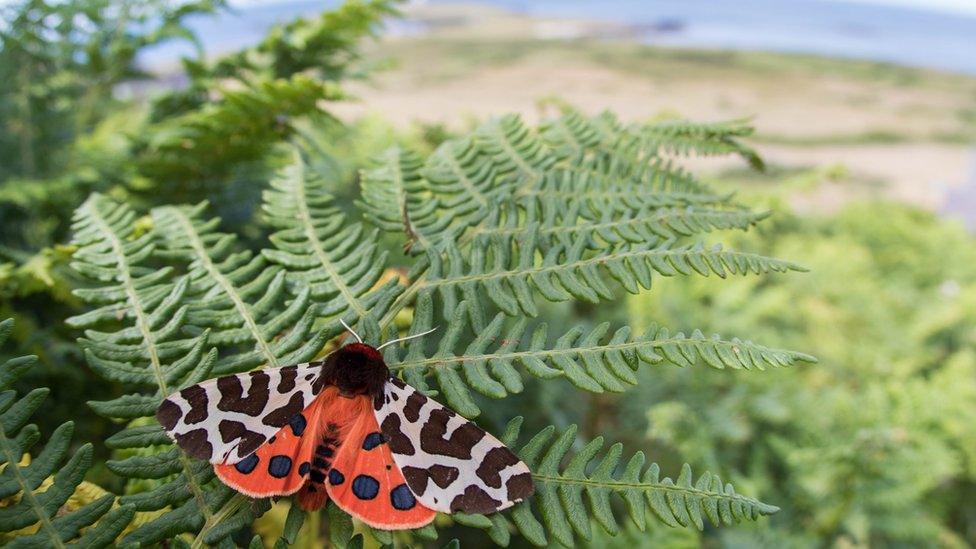
Across the UK the garden tiger moth is in real trouble - it has declined a lot over the past 20 - 30 years, but on Bardsey the population is relatively stable.
I would take pictures of them on surveys with the Bardsey Field Observatory, which monitors the wildlife on the island.
To me, they were quite common here, but it is not until you realise it's wider context - and decline - that you really appreciate them.
They have a beautiful vivid colour, a warning shade that signals to predators they are not good to eat.
Related topics
- Published3 April 2020
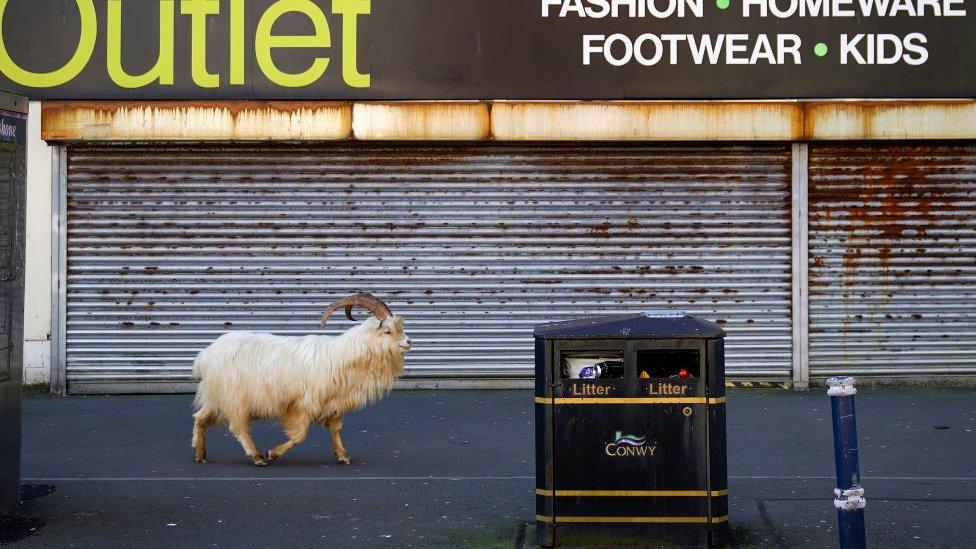
- Published1 April 2020
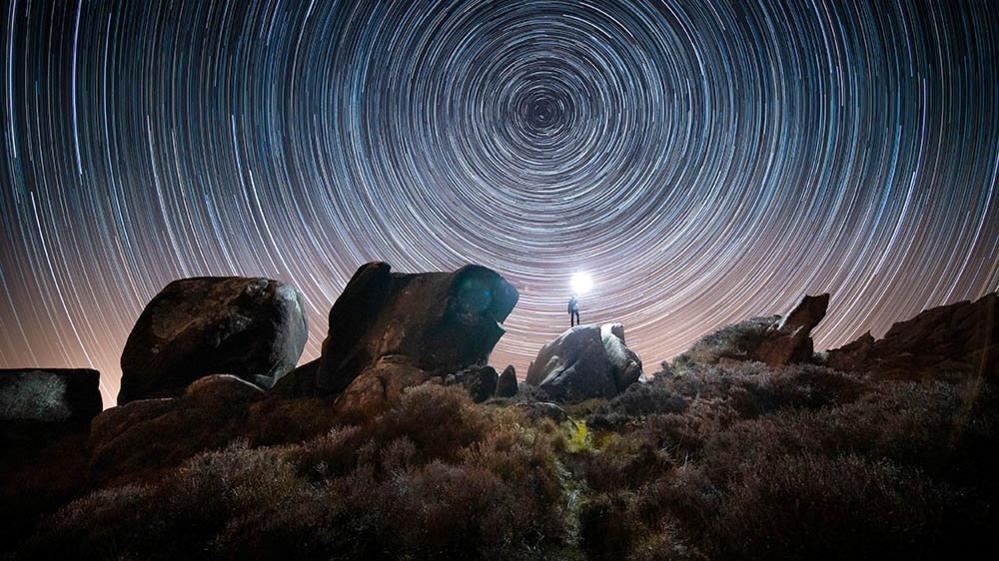
- Published25 February 2011
- Published2 December 2016

- Published12 August 2019
